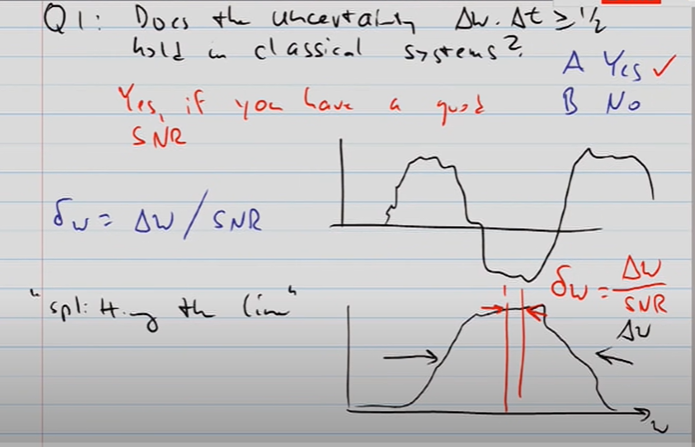Unfortunately, the words such as uncertainty, resolution, accuracy, etc., are used in everyday language do not mean the same as in physics or in engineering, and because of that these concepts lead to confusion.
Anyhow, there really are two completely different concepts frequently confused, namely accuracy and resolution.
Accuracy is essentially the standard deviation, i.e. dispersion, (or some given multiple thereof) of any noisy measurement of a fixed parameter under the assumption that the noise is stationary and the parameter is fixed so that when the measurement is repeated $N$ times independently one from another the arithmetic average of the standard deviation of each measurement is $\sigma_N=\frac{\sigma_1}{\sqrt{N}}$ where $\sigma_1$ is the standard deviation (dispersion) of any single measurement. This shows how one can improve the accuracy of a single measurement by averaging the results of several measurements of the same kind. Note that the arithmetic average involved in this improvement is really a kind of linear filter, this view is especially clear when sliding window averaging is applied.
The concept with which accuracy is frequently confused is resolution. Henceforth, resolve yourself to consider resolution as the ability to discriminate between two possible occurrences, say a pulse crossing a threshold because its amplitude is large enough or two pulses crossing the same threshold because both amplitudes are large enough; here the "fixed parameter" is the amplitude(s) that is compared to a threshold. As long as the pulses do not overlap and there is no noise it is clear whether they cross or do not cross. But if they do overlap first one must decide if there are one or two pulses, and this question becomes even more difficult to answer in noise. The ability to discriminate between the two possibilities is affected both by the noise in which the pulses are embedded and by the pulse shape. When measuring frequency you are comparing the received signal (pulse) with a sinusoid of a given frequency by aligning the ripples of the infinite long sinusoid with that of the pulse, the more ripples (periods), zero crossings, etc., can be aligned the closer your frequency estimate will be, and this is just saying in words the Fourier Transform version of the Heisenberg UR: $\Delta \omega \Delta t \ge \frac{1}{2}$. Here $\Delta t$ and $\Delta \omega $ are the rms pulse length and rms bandwidth of the signal, resp., but no noise. If you have two equal energy signals, it is customary to say (Rayleigh) that they can be resolved if they are separated in time or in frequency by at least one rms pulse width $\Delta t$ or bandwidth $\Delta \omega$. This is a practical number and its usefulness depends on the context. For smooth pulses with say SNR=10dB is quite good, and useful. In other context these rules of thumb maybe less so.
To your question, averaging can get you much better measurement accuracy, ie., dispersion of the frequency by averaging irrespective of how large or small the "Fourier resolution" $\Delta \omega$ maybe. The individual pulse shape determines $\Delta \omega$ and this is independent of noise. Each individual measurement has its own accuracy that depends on the prevailing SNR but if you repeat it often enough then the arithmetic average of them can be made arbitrarily small, ie., line splitting.
Important to note though that while you can split a "single" line i.e., a single pulse but repeated many times, if you have several signals simultaneously and closer in frequency than say $\mu \Delta \omega$ where $\mu = \mathscr {O}(1)$ then you will not be able to separate them and you may bias your measurement catastrophically when averaging them. This brings the issue of filtering back because the response of any linear causal passive filter extends to infinity, and thus, having gone through the same linear filter, no two real physical pulses are truly non-overlapping and one cannot have accuracy without resolution.

